Family : Serranidae

Text © Giuseppe Mazza

English translation by Mario Beltramini
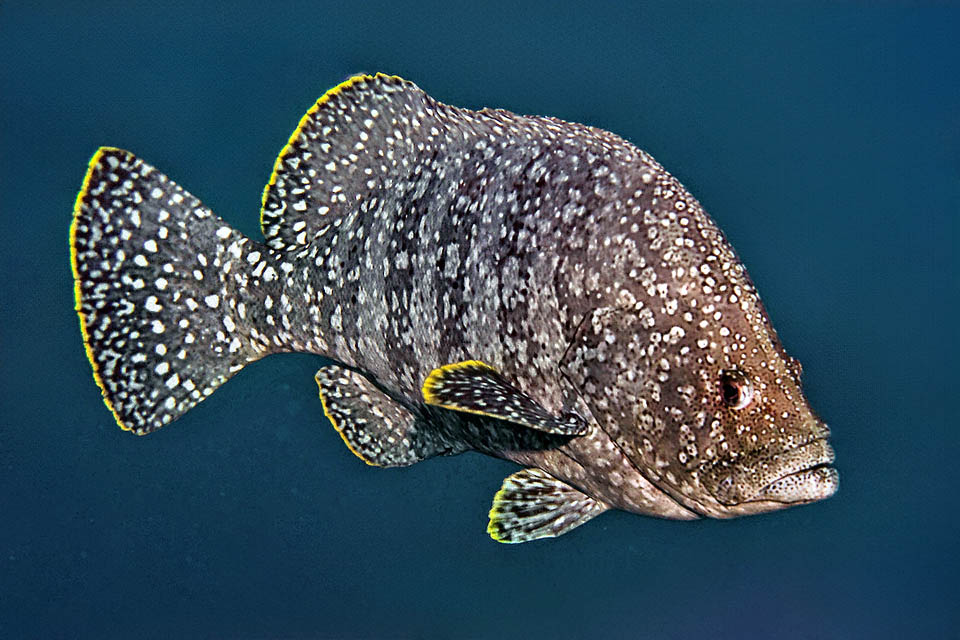
Dermatolepis dermatolepis is a tall and flat grouper of eastern Pacific present from South California to Peru and oceanic islands up to about Galapagos © www.carlosestape.photoshelter
Known as Leather bass or Marbled grouper, Dermatolepis dermatolepis (Boulenger, 1895), traditionally inserted into the family of the Serranidae, belongs to the class of the Actinopterygii, the ray-finned fish and to the order of the Perciformes, but presetly, in order to highlight its differences, some scholars place it in the suborder of the Serranoidei and in the family of the Epinephelidae, that of the groupers in a strict sense.
The genus Dermatolepis, created by Gill in 1861, originates as formed by the Greek “dermatos”, skin, and “lepis”, scale, with reference to the small cycloid embedded in the skin, term resumed also for the species by Boulenger in 1895.
Unlike plants, the tautonymy, that is the use of the same word for the genus and the species, is in fact admitted in the animal taxonomy.
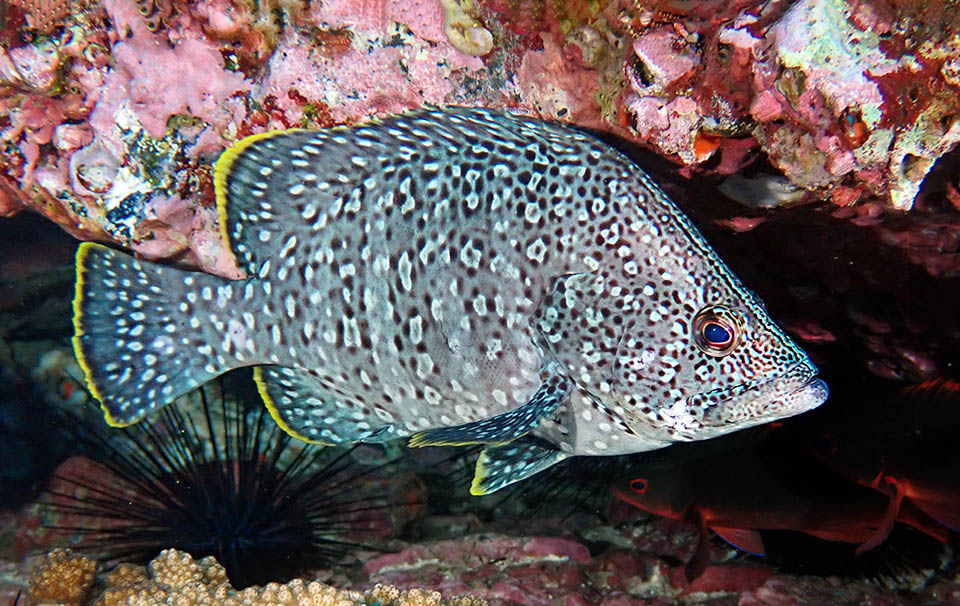
It may reach 91 cm and 10 kg of weight. the frontal profile is oblique and steep, and the livery, with almost black and grey alternate vertical bands, has several clear spots © Billy Bensted-Smith
Zoogeography
Dermatolepis dermatolepis covers a very vast range along the coasts of eastern Pacific from southern California to Peru, where the sea has temperatures included between 23,6 and 28 °C, then pushing on oceanic islands up to the Galapagos.
Ecology-Habitat
It usually moves between 4 and 40 m of depth, but can also go down deeper, among madreporic formations or in rocky environments rich in ravines.
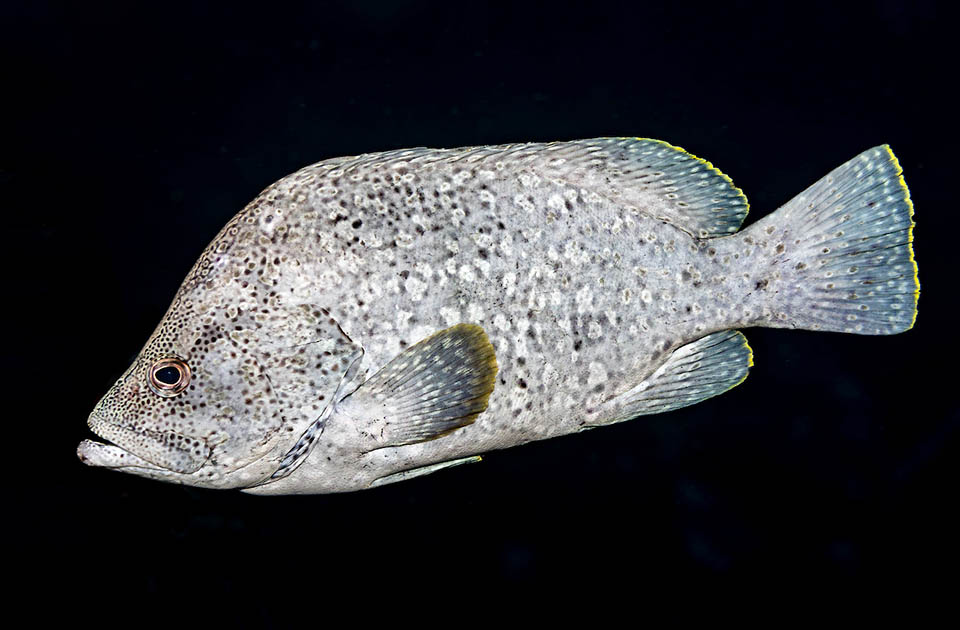
At times bands disappear and the dotted body seems marbled. The edge of the fins is always, however, strictly yellow © www.carlosestape.photoshelter
Juveniles grow up sheltering from predators among the long spines of sea urchins of the. genus Centrostephanus or Diadema.
Morphophysiology
Dermatolepis dermatolepis may reach 91 cm in length and the maximum published weight of 10 kg. The body is tall and strongly compressed with the snout much longer than the eye and the frontal profile oblique and steep. The preoperculum displays a fine serration and the back nostrils are 2-3 times bigger than the anterior ones.
The dorsal fin has 11 spiny rays and 18-20 soft; the anal 3 spiny rays and 9 unarmed; the pectoral ones 18-20 rays; the pelvic are smaller and the caudal is more or less truncated.
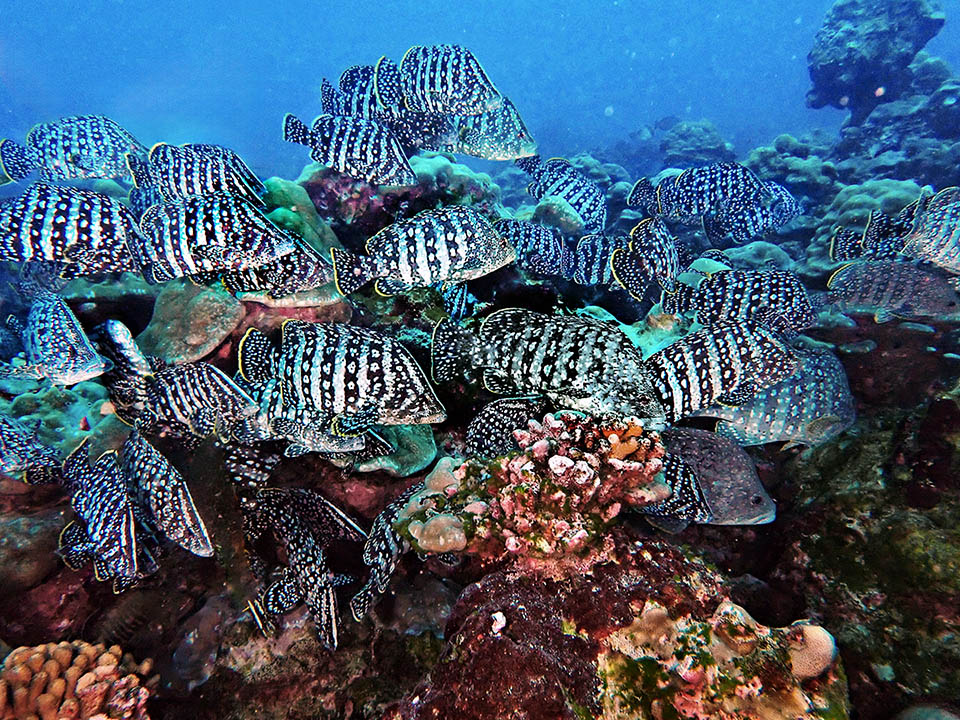
For the reproduction aggregations of about 30-70 fishes form who go up together to the surface to entrust their gametes to the currents © Billy Bensted-Smith
The livery of the adults is its whole greyish brown with alternating vertical bands almost black and grey carrying several white or clear spots. The bars may also be missing. but the margin of the fins is always yellow.
The juveniles at first have vertical bands white and black, camouflaged between the spines of the sea urchins, but then, with the head and the front growing, get yellow.
Etology-Reproductive Biology
Dermatolepis dermatolepis is a diurnal predator feeding mainly on small benthic fish.
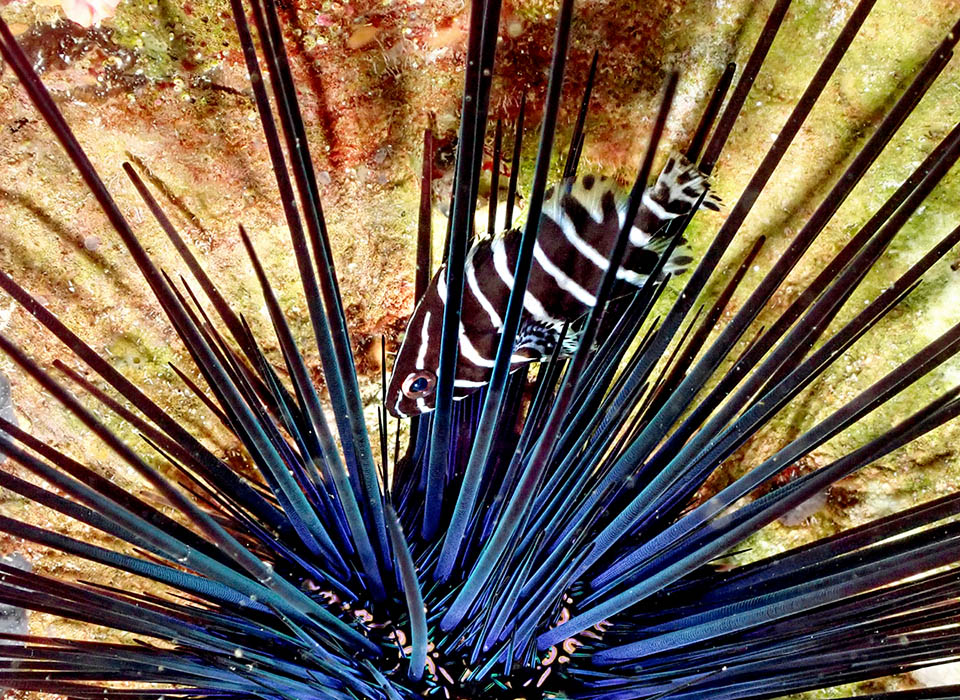
At first juveniles have white and black vertical bands, camouflaged among sea urchins spines of the genera Centrostephanus or Diadema who protect them from predators © Billy Bensted-Smith
To flush them out, at times it follows the hunt of the morays that cause them to come out terrified from their hiding places.
Another trick is to mix with herbivorous fish, pretending to be grazing, to then grab them by surprise.
Crabs and small shrimps also belong to its diet and even if it is not a very studied fish it is known that some females may transform into males becoming bigger than those born as such from their birth.
The reproduction, mostly in February or July depending on the locations, takes place by dusk with aggregations of about 30-70 fishes who reach the surface entrusting their gametes to the currents.
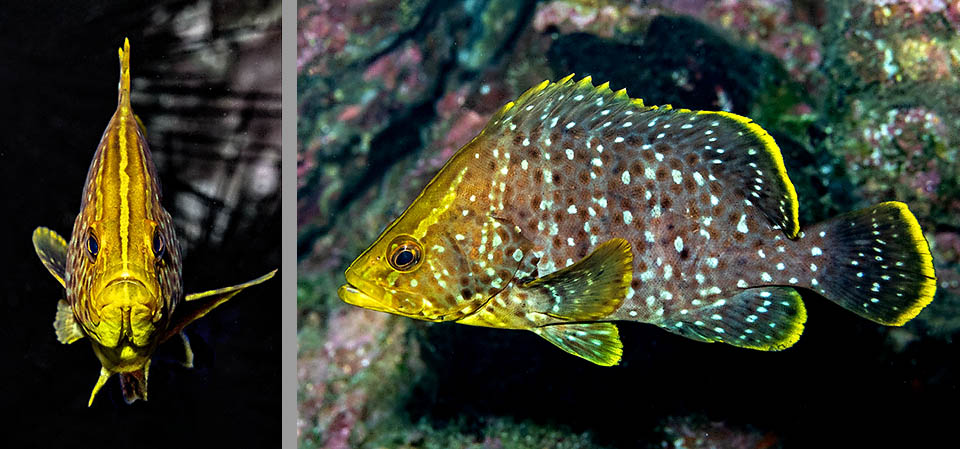
Then, growing, the head and front of the young turn yellow. Their life expectancy is of about 24 years, but very little is known about the populations trend and despite its vast range Dermatolepis dermatolepis hence appears prudently in the IUCN Red List of the endangered species as “DD, Data Deficient” © www.carlosestape.photoshelter
The Leather bass resilience is low with a minimum time for doubling the populations of 4,5 and 14 years and the fishing vulnerability, high, marks 56 on a scale of 100.
The life expectancy is about 24 years, but very little is known about the trend of the populations and since 2018 Dermatolepis dermatolepis consequently appears as “DD, Data Deficient” in the IUCN Red List of the endangered species.
Synonyms
Serranus inermis Valenciennes, 1833; Epinephelus inermis (Valenciennes, 1833); Dermatolepis zanclus Evermann & Kendall, 1898; Dermatolepis marmoratus Osburn & Mowbray, 1915.
→ For general information about FISH please click here.
→ For general information about BONY FISH please click here
→ For general information about CARTILAGINOUS FISH please click here.
→ To appreciate the BIODIVERSITY of BONY FISH please click here.
→ To appreciate the BIODIVERSITY of CARTILAGINOUS FISH please click here.
